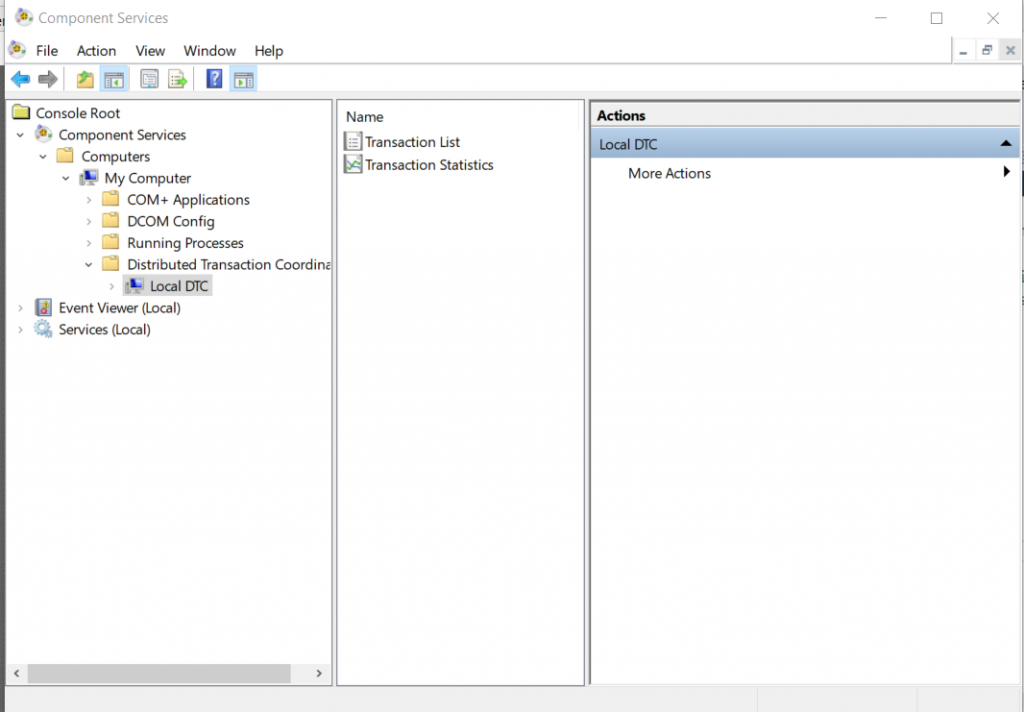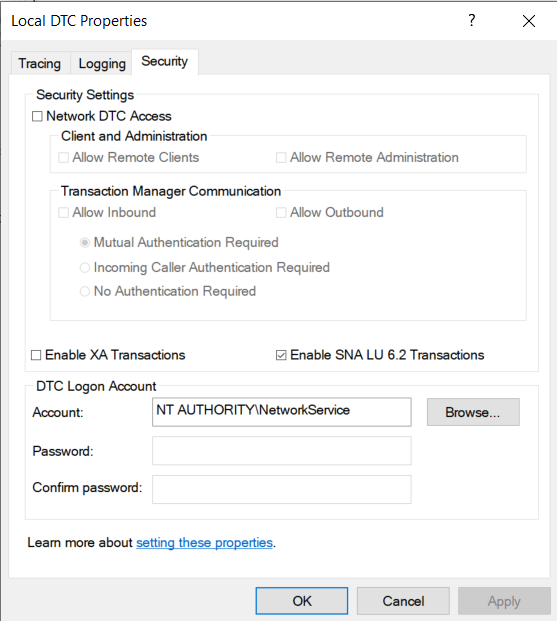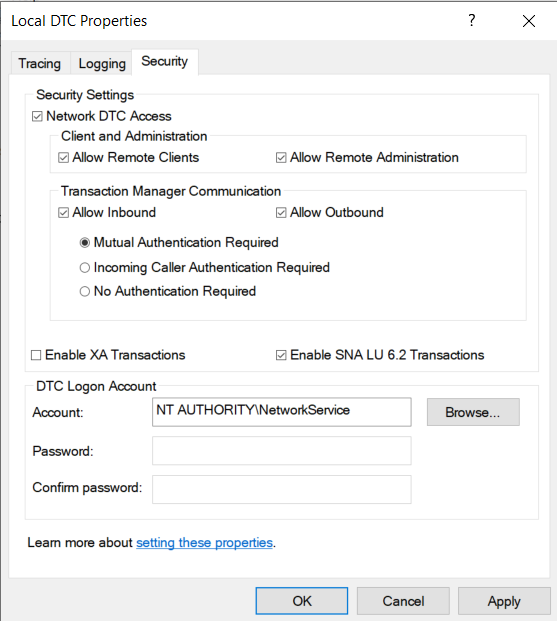When building out a new SQL Server to replace an existing SQL Server, the previous system may have been using DTC or the Distributed Transaction Coordinator. This needs to be done on both sides of the transaction, meaning both servers that are participating in the distributed transaction.

Next, right click on the Local DTC and select properties. On the third tab, the Security tab you then need to enable DTC access.

You can choose to allow inbound and outbound or one or the other, or to allow Remote Administration depending on your needs. I usually find that he following configuration is what is needed.

After that be sure to restart the Distributed Transaction Coordinator from the windows services.
More from Stedman Solutions:

Steve and the team at Stedman Solutions are here for all your SQL Server needs.
Contact us today for your free 30 minute consultation..
We are ready to help!
Getting DTC configured correctly is very important, so kudos for this post. However, I often hit a problem with MSDTC configuration on a WSFC install. This typically happens during a server build, such as a SQL Server install, where one node of the cluster is configured in its entirety before starting the SQL build on a second node.
If only one node of the cluster is running and DTC is configured, the server can be rebooted and the configuration remains intact after the reboot. However, if only one node of a cluster has had the DTC configuration done and a second node is running, after a reboot the DTC configuration gets reverted back to default. The DTC configuration only survives a reboot if it is configured on all nodes in the cluster.
The problem can be replicated just by configuring a DTC role on an otherwise vanilla cluster, with no other software installed. It definitely happens on Win2016 and Win2019, I cannot remember if it happened on older Windows versions. One attempt to prevent this problem was to set the DTC rolw to only run on the configured node, but this did not help.
Has anyone else seen this problem, and is there a way to avoid it.
Edward – I have not personally seen the issue you are describing, perhaps another reader will comment if they have see it.
-Steve Stedman